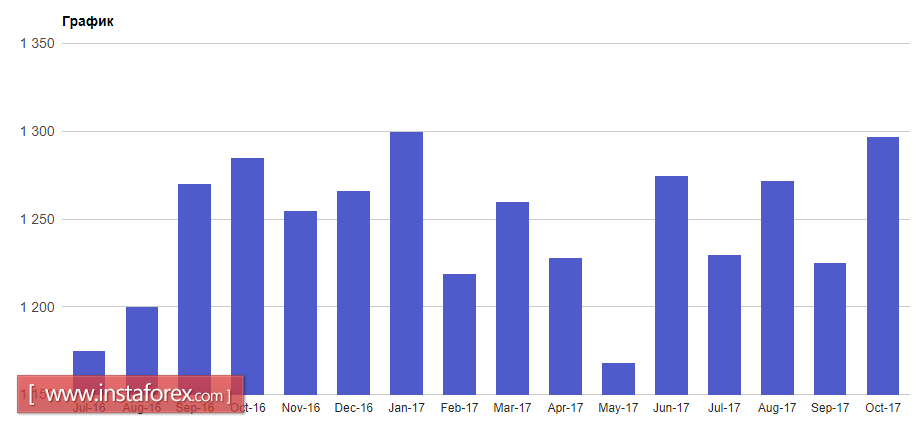Given the lack of important fundamental data, buyers of the European currency took advantage of this, and amid concerns of the Fed representatives that the inflation rate in the US played some positions against the US dollar. However, the European currency has not yet received a larger upward trend.
Speaking on Monday, Fed representative Neil Kashkari said that hiking the Fed's rates could hamper the target inflation rate of 2%, and also push the economy into recession. In his opinion, the Federal Reserve's policy is currently putting pressure on the yield of long-term US bonds, and it is important to wait for evidence of rising inflation before hiking rates again.
As for the changes in the US tax reform, according to the head of the Federal Reserve Bank of Minneapolis, his attitude towards monetary policy will not change.
Tuesday will also be a very quiet day amid a lack of important macroeconomic data. In the first half of the day, a report will be released from the IFO Institute. In the afternoon, traders will closely follow the report on the volume of issued construction permits in the US, which will indicate the state of the real estate market.

As for the technical picture, in order to maintain the likelihood for a sustained growth in the euro, large buyers need to take the resistance level at 1.1800, which will lead to a further upward trend with a repeat in output at 1.1830 and an update of 1.1860.
In case a serious upward trend above 1.1800 is not formed, it is likely for pressure to be renewed on the euro. This will return the trading instrument to the level of 1.1775 and lead to a sharper selling with an update at 1.1740 and 1.1700.
Traders of the Australian dollar ignored the publication of the minutes of the RBA meeting on monetary policy.
The Central Bank expects interest rates to match inflation and GDP targets. The latest figures have raised confidence about employment and inflation prospects, but consumption will likely remain moderate in the fourth quarter of this year.
Once again, the RBA expressed fears of a higher rate of the Australian dollar, which could slow the recovery of the economy.
As for the labor market, wages are expected to grow, which will increase with time. However, this will happen after the underloading in the labor market begins to decline gradually.
The potential of a further upward trend in the AUDUSD pair will depend wholly and entirely on the quotations for energy carriers.





















